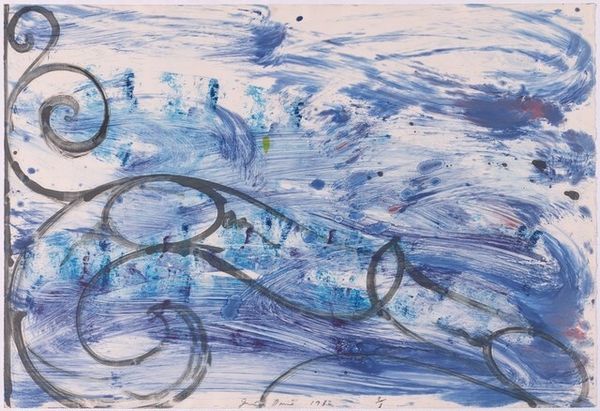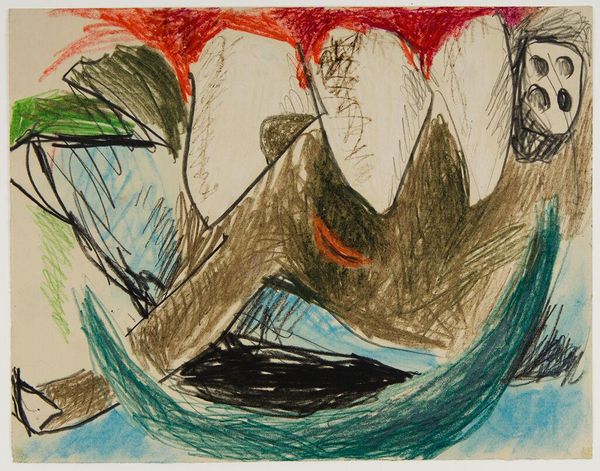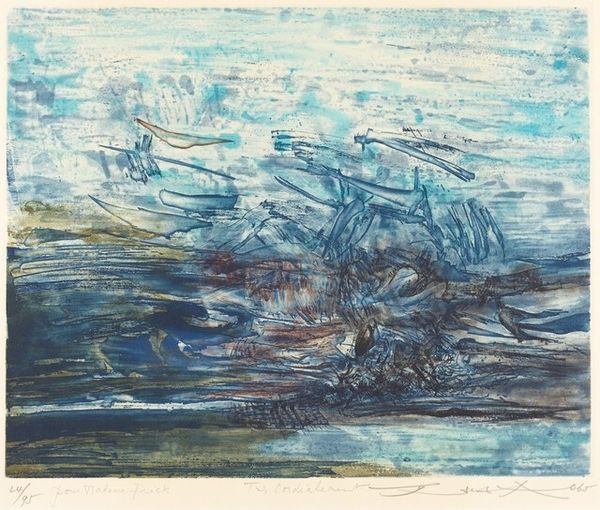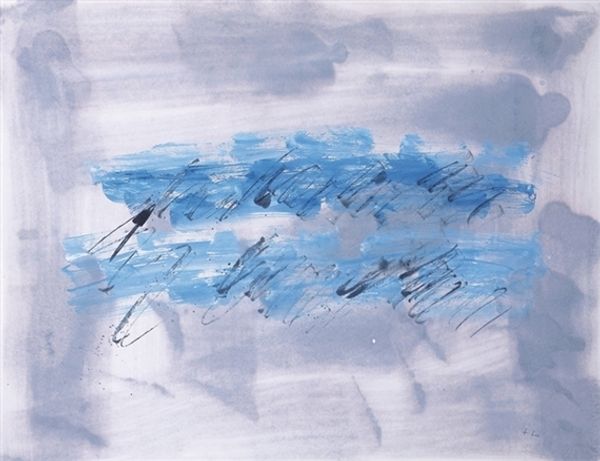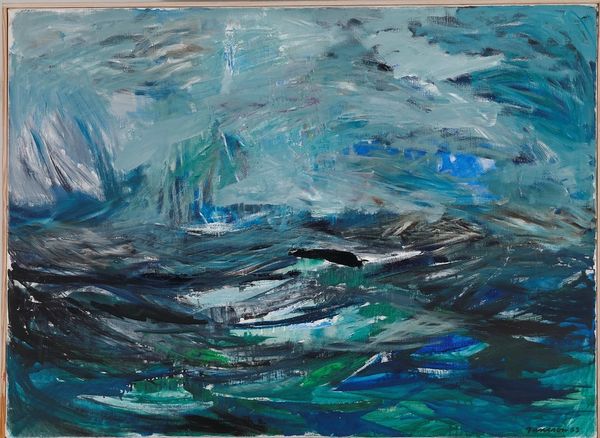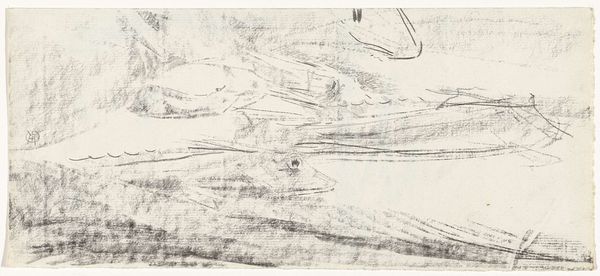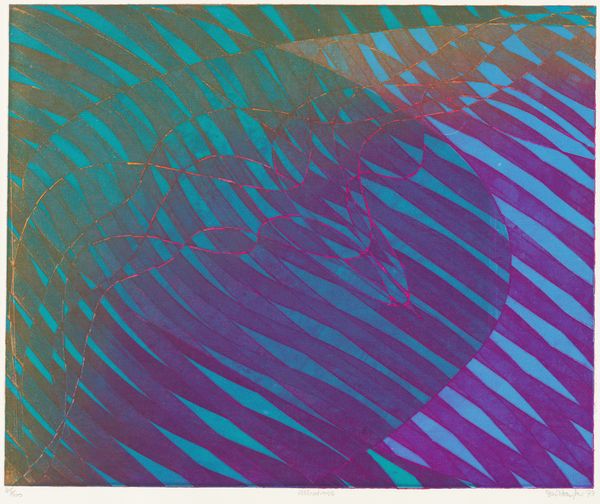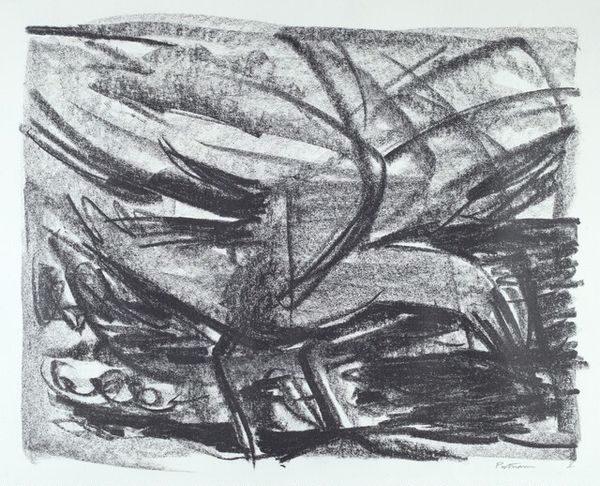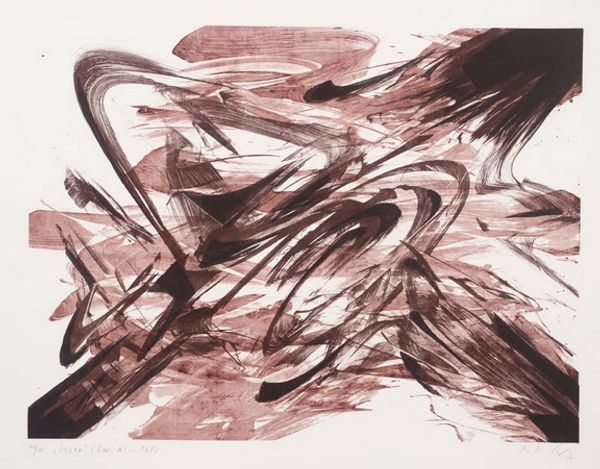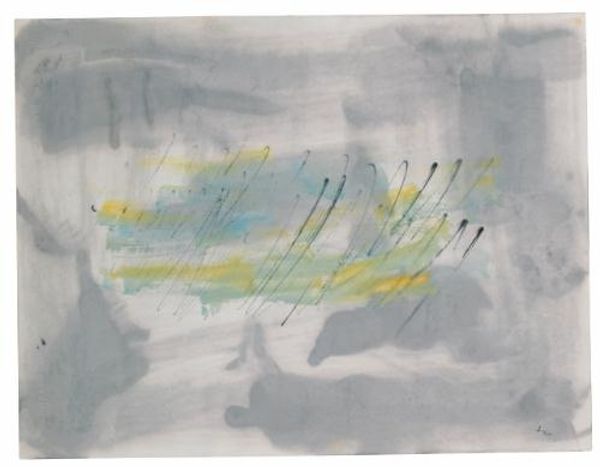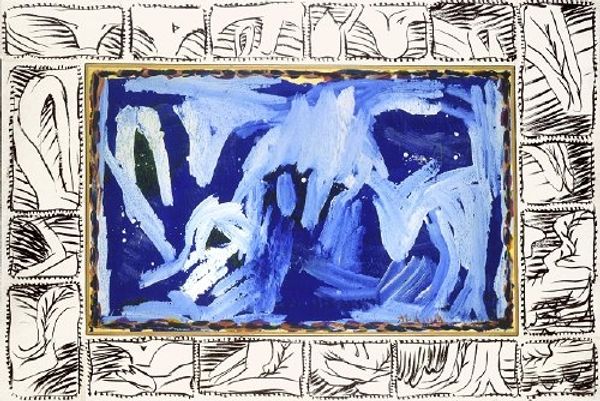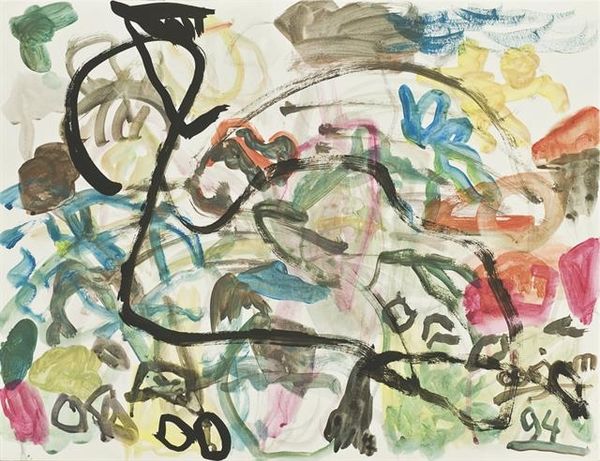
monotype, print, gestural-painting, ink
#
monotype
# print
#
abstract
#
gestural-painting
#
ink
Dimensions: right panel: 80.65 × 118.75 cm (31 3/4 × 46 3/4 in.) overall: 80.65 × 237.17 cm (31 3/4 × 93 3/8 in.)
Copyright: National Gallery of Art: CC0 1.0
Curator: Jim Dine's 1982 monotype, "London Monotype XI (The Gate)," immediately strikes me as something turbulent, a visual depiction of emotional weather. What do you make of it? Editor: It reminds me of old illuminated manuscripts, Curator, that careful dance of the abstract and the representational. This ‘gate’ isn't simply a portal; it’s loaded with symbolic weight, almost heraldic with those fluid swirls. Curator: Heraldic, yes, I see what you mean. And within that "gate," there's this rush of blue—ink dragged across the surface. Looking at it through a contemporary lens, the "gate" itself reads like a barrier, perhaps. Are we invited in or kept out? It speaks to a kind of enforced access. Editor: The swirls along the border carry so much weight. They pull in associations: labyrinths, decorative ironwork, even, perhaps, classical representations of chaos or primordial waters. The color suggests both sky and sea – constants, absolutes. Curator: A powerful point. These swirling blue expanses do evoke natural forces, don't they? And given that the artist entitled the piece, the intentionality really centers around what that gate represents for individuals of different access and abilities. Editor: Dine's gesture seems key here. It's direct and visceral. It cuts through any pretense. Curator: Precisely! It is a gestural dance that makes statements about socio-political dynamics. Dine forces a dialogue about who gets to experience a work like this, while asking who it has been historically curated for. Editor: The texture, too, achieved by this printing technique emphasizes the notion of layered experiences; you only get the full image through patient discovery. You almost get this glimpse through a doorway. Curator: Yes! What appears initially fluid reveals deeper stratifications. Do you find the abstract qualities affect accessibility to various audiences or individuals? Editor: Abstraction is so tricky, isn't it? I find myself going back to the raw, emotional quality it evokes— almost the residue left by that which truly affects us and influences the visual languages we choose. Curator: You know, this exploration helps us question the narrative that the art world creates around access and privilege; it forces an important dialogue. Editor: Yes, it encourages the opening of our own, internal gates.
Comments
No comments
Be the first to comment and join the conversation on the ultimate creative platform.
